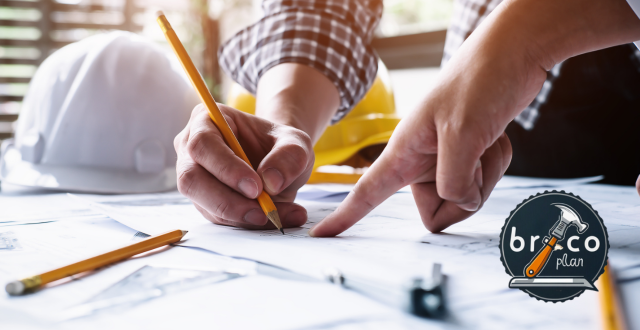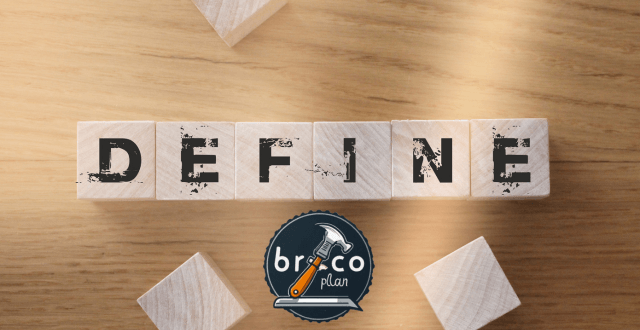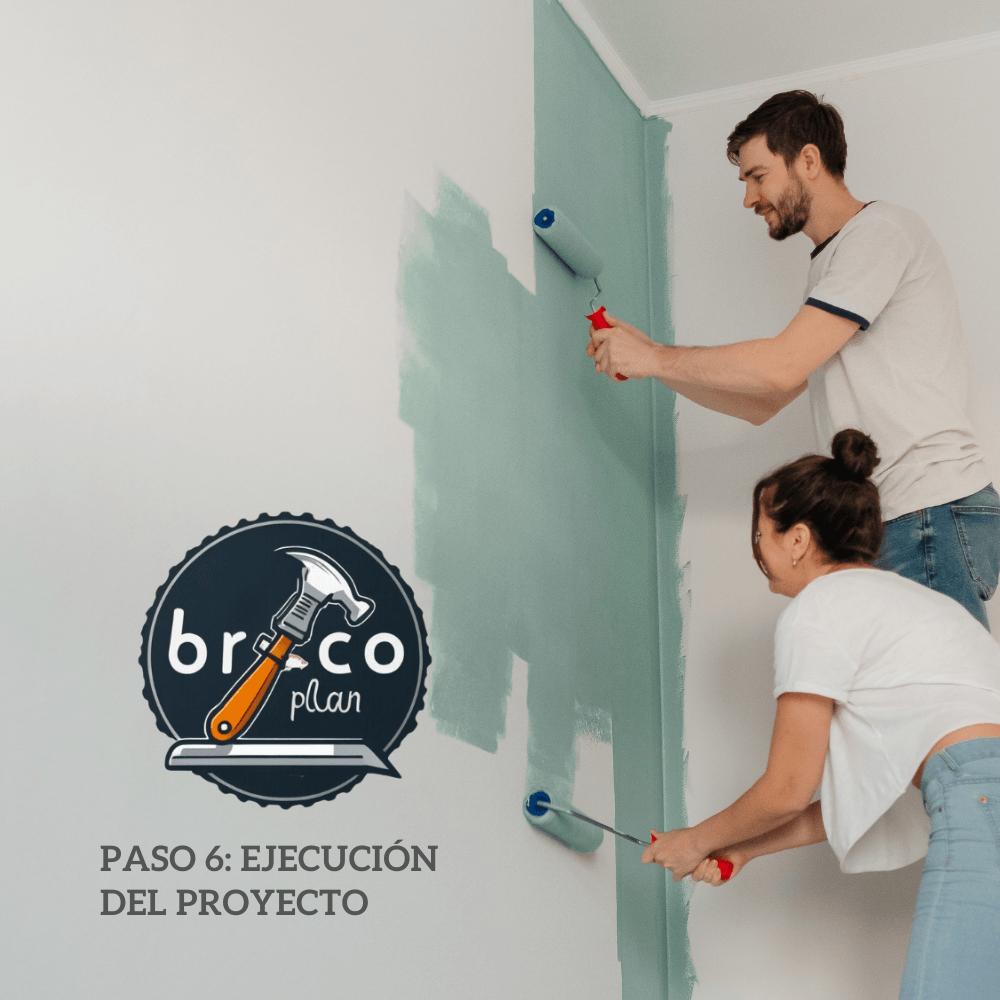
How to Plan a DIY Project: A Complete Guide for Beginners and Experts
Today I want to share with you the essential steps for planning and executing a DIY project. Whether you're renovating a room, building a piece of furniture, or simply improving your home, this guide will provide you with all the tools you need to take your projects to the next level. Ready to get started? Let's go!
Step 1: Define the Project
First things first: What do you want to do when planning a DIY project? Clarity is key. Imagine you have a magic wand and can create anything. What would that be? A bookshelf, a coffee table, or maybe redecorating your garden. Jot down your ideas and prioritize the ones that excite you or are most needed.

Advice: Make a wish list and prioritize it. This will help you focus on one project at a time and avoid getting overwhelmed.
Step 2: Research and Planning

Once you have your DIY project in mind, it's time to do some research. This is the second phase of a DIY project.
Spend time searching for inspiration online, on magazines, and on DIY books. Visit specialty stores to see materials and tools in person.
Pro Tip: Don't underestimate the power of video tutorials. Platforms like YouTube are full of step-by-step DIY projects that can serve as a visual guide.
Essential tools
Step 3: Budget and Bill of Materials
Prepare a detailed budget.
Includes all materials, tools and possible additional costs.
Be sure to add some margin for unforeseen events.
Advice: Buy 10% more material than you think you'll need to cover any unexpected mistakes or waste.

Step 4: Design and Measurements

Draw your ideas. You can use paper and pencil or digital tools like SketchUp.
Make sure you take accurate measurements and consider all the details before you start cutting materials. It may seem like a dry cleaner's job, but it's key when planning your project.
My experience: Once, when building a bookshelf, I forgot to measure the height of the ceilings. I ended up with a beautiful piece of furniture that didn't fit in the living room. Don't make the same mistake!
Step 5: Preparing the Workspace
Before you begin, prepare your workspace.
Make sure you have good lighting, ventilation, and enough space to move around.
Any self-respecting DIY project organizes your tools and materials when planning the project.
Advice: Use tarps or plastic to protect the floor and nearby furniture from dust and paint splashes.

Step 6: Execution of the DIY Project

This is where the magic happens. Stick to your plans and schedule.
Work calmly and precisely, and don't rush. Quality is more important than speed.
Tips:
Safety first: Wear gloves, protective eyewear, and masks if necessary.
Regular breaks: Take breaks to avoid mistakes due to fatigue.
Step 7: Finishes and Details
The details are what make the difference.
Sand the surfaces, apply paint or varnish, and add the finishing touches. This will make your project look professional and well-finished.
My favorite trick: After applying the varnish, I gently sand with a fine-grit sandpaper for an ultra-smooth finish.

Step 8: Evaluation and Adjustments

Review your work with a critical eye.
Make sure everything is secure and well-finished. This is a very important step when planning a DIY project.
Make adjustments if necessary to ensure the durability and functionality of your project.
Advice: Don't hesitate to ask for a second opinion. Sometimes, another perspective can help you spot details you missed.
FAQs – About Planning a DIY Project
What online resources can help me learn new DIY techniques?
In addition to video tutorials, you can explore specialized blogs, forums, and social media groups where experiences, tips, and tricks are shared to enrich your learning.
Why is it important to document a project process?
Recording each step, whether through photos, videos, or notes, allows you to evaluate your progress, identify improvements, and share your achievements with the community, making it easier to replicate success in future projects.
What strategies can help me organize my materials and tools efficiently?
Implement storage systems, use labels, and designate a specific area for your workshop. Pre-organization will save you time and reduce stress when searching for tools during the project.
How can I better manage my time when doing DIY?
Establish a realistic timeline by breaking the project down into smaller tasks and assigning daily or weekly goals. This planning will help you maintain a consistent pace and avoid delays.
How can I incorporate sustainable practices into my DIY projects?
Choose to recycle materials, reuse objects, and choose eco-friendly products. These practices not only benefit the environment but often open the door to creative and cost-effective solutions.
Is it better to work alone or in a team on a DIY project?
The decision depends on the nature of the project. While some projects can benefit from collaboration and the exchange of ideas, others can be better handled individually, depending on your experience and preferences.
What training options are available to improve my DIY skills?
You can consider in-person workshops, online courses, and community gatherings. These experiences allow you to learn new techniques, resolve questions in real time, and stay up-to-date with DIY trends.
Conclusion
Planning a DIY project It may seem like a monumental task, but with proper preparation and careful execution, you can achieve amazing results.
Don't hesitate to share your projects and experiences with the DIY community; there's always something new to learn.
Bricoplan Posts That May Interest You
- Organizing Your DIY Workshop at Home: A Practical GuideA guide to organizing a suitable workspace can be ideal. This article provides specific tips for optimizing your workshop, essential for executing any DIY project efficiently.
- 20 Easy DIY Home ProjectsThis post can serve as direct inspiration for those looking for specific examples of easy-to-do projects. It also provides practical ideas for beginners who want to begin planning low-cost, immediate-impact projects.
- 5 DIY Homemade Projects with Kids
- 10 Common Mistakes When Buying DIY Tools
- Complete DIY Safety GuideSafety is a crucial aspect of any DIY project. This companion article reinforces project planning with a focus on precautions and best practices to avoid accidents and work with confidence.
- Best free AI interior design apps
- Complete Home Renovation in Barcelona: 12 Tips for Saving Money
- Technology Revolutionizes the World of DIY
- Tips for Working with Wood Like a Pro
- Homemade DIY – How to transform your home and your life
For more ideas and tips, visit my Blog Bricoplan and join our community of DIY enthusiasts. Remember the DIY safety is paramount.
Happy DIY!









